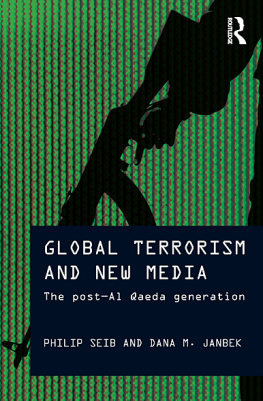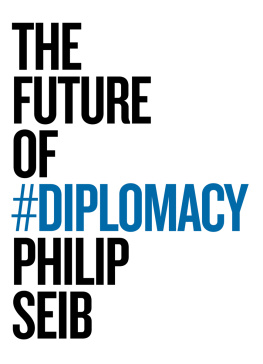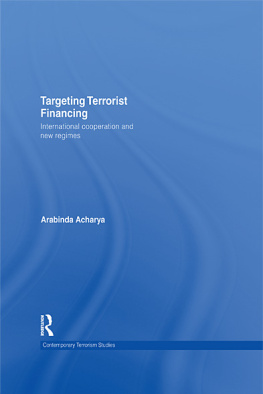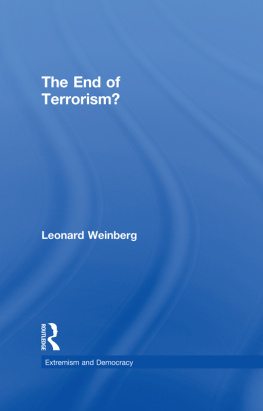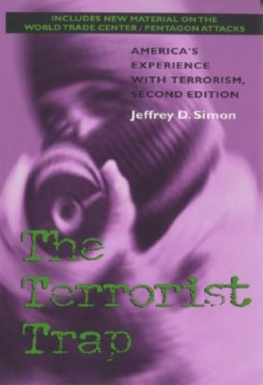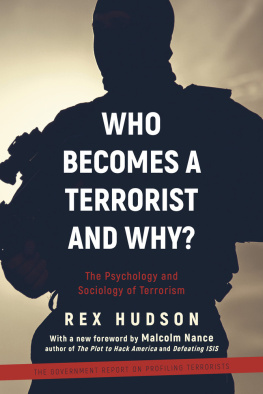Global Terrorism and New Media
Global Terrorism and New Media carefully examines the content of terrorist websites and extremist television programming to provide a comprehensive look at how terrorist groups use new media today.
Based partly on a content analysis of discussion boards and forums, the authors share their findings on how terrorism 1.0 is migrating to 2.0 where the interactive nature of new media is used to build virtual organization and community. Although the creative use of social networking tools such as Facebook may advance the reach of terrorist groups, the impact of their use of new media remains uncertain. The book pays particular attention to terrorist media efforts directed at women and children, which are evidence of the long-term strategy that some terrorist organizations have adopted, and the relationship between terrorists media presence and actual terrorist activity. This volume also looks at the future of terrorism online and analyzes lessons learned from counterterrorism strategies.
This book will be of much interest to students of terrorism studies, media and communication studies, security studies and political science.
Philip Seib is Professor of Journalism and Public Diplomacy, Professor of International Relations, and Director of the Center on Public Diplomacy at the University of Southern California.
Dana M. Janbek is Assistant Professor at the Department of Communication at Lasell College.
Media, War and Security
Series Editors: Andrew Hoskins, University of Warwick, and Oliver Boyd-Barrett, Bowling Green State University
This series interrogates and illuminates the mutually shaping relationship between war and media as transformative of contemporary society, politics and culture.
Global Terrorism and New Media
The post-Al Qaeda generation
Philip Seib and Dana M. Janbek
Global Terrorism and New Media
The post-Al Qaeda generation
Philip Seib and Dana M. Janbek

LONDON AND NEW YORK
First published 2011
by Routledge
2 Park Square, Milton Park, Abingdon, Oxon OX14 4RN
Simultaneously published in the U.S.A. and Canada
by Routledge
270 Madison Avenue, New York, NY 10016
Routledge is an imprint of the Taylor & Francis Group, an informa business
This edition published in the Taylor & Francis e-Library, 2010.
To purchase your own copy of this or any of Taylor & Francis or Routledges collection of thousands of eBooks please go to www.eBookstore.tandf.co.uk.
2011 Philip Seib and Dana M. Janbek
All rights reserved. No part of this book may be reprinted or reproduced or
utilized in any form or by any electronic, mechanical, or other means, now
known or hereafter invented, including photocopying and recording, or in
any information storage or retrieval system, without permission in writing
from the publishers.
British Library Cataloguing in Publication Data
A catalogue record for this book is available from the British Library
Library of Congress Cataloging-in-Publication Data
Seib, Philip M., 1949
Global terrorism and new media : the post Al-Qaeda generation / Philip
Seib and Dana M. Janbek.
p. cm.
Includes bibliographical references and index.
1. Terrorism and mass media. 2. TerrorismComputer network resources. 3.
TerroristsRecruiting. 4. InternetPolitical aspects. 5. Information warfare.
I. Janbek, Dana M. II. Title.
P96.T47S45 2010
363.325dc22
2010006937
ISBN 0-203-84537-4 Master e-book ISBN
ISBN 978-0-415-77961-6 (hbk)
ISBN 978-0-415-77962-3 (pbk)
ISBN 978-0-203-84537-0 (ebk)
To the victims of the United States 9/11 and Jordans 9/11, and to others throughout the world whose lives have been affected by terrorism.
Contents
Preface
This book is not the first examination of terrorism and new media, nor will it be the last. That says as much about the durability of terrorism and its embrace of new media tools as it does about the persistence of those who write about such matters.
As a political force, terrorism has a long history and it has always evolved in order to survive and retain its ugly potency. During the first decade of the twenty-first century, terrorism has proved to be pervasive in terms of the incidence of terrorist acts, the pretensions to legitimacy of terrorists, the prominence of a few individual terrorist leaders, and, more significantly, in the way it has invaded our consciousness, permeating society with fearful awareness. The broad existence of a sense of terror, felt by some more acutely than by others, is a success for the purveyors of terrorism. There is no terrorism without communication, and this success has been enabled in part by clever use of new media, principally the numerous tools provided by the Internet.
The breadth of terrorisms societal presence is evidence that it is no longer the domain of the individual mad bomber or the isolated group of plotters intent on a single act or on a limited campaign designed primarily as a symbolic venture. Rather, today we see terrorism as an expansive enterprise, reliant on claimshowever fraudulentof religious or political legitimacy. Some terrorist organizations are conscious of building for the future, as can be seen in their insidious outreach to children. They nurture hatred and take advantage of ignorance and innocence to ensure that their ranks will fill faster than they can be depleted by counterterrorism measures.
This appeal to young people (as is discussed in ) illustrates ways that new media have been woven into the fabric of terrorist enterprises. YouTube, as just one example, has proved an invaluable tool, allowing terrorist groups to advertise themselves in a venue that has innate attraction to a youthful audience. Without Internet-based media, terrorists would probably be unable to reach most of these prospective supporters. In terms of remaining visible to a larger, more general audience, the Internet similarly allows terrorist groups to thrive virtually, outside the shadows where they once had to dwell.
The relationship between terrorism and new media is important to several constituencies that address terrorism in different ways. For governments seeking to prevent terrorist attacks and to punish those who have carried out such attacks, new media add layers of complexity to terrorist organizations and operations. Whether the means of addressing terrorism is through military, law enforcement, or politics, the technologically sophisticated milieu in which many terrorists operate makes them both more elusive and more ubiquitous. This is the terrain on which they must be fought, as well as by using more traditional methods to find them and remove their operating capacity through capturing them or by enticing them to repudiate violence and rely instead on conventional political practices.
Members of the public must understand terrorism if they are to successfully deal with the terror produced by this enemy. Even if not directly or physically affected by terrorist attacks, people in many parts of the world must confront fearof flying in an airplane, of traveling on a train or subway, of working in an office building, and even just driving down a street or going shopping. In the West, there is a tendency to focus on singular events such as the 9/11 attacks or the bombings in London and Madrid. But what about the Iraqis and Pakistanis and others who live every day with the very real possibility of a terrorist bombing? For people to exist without the emotional paralysis that terror can induce requires an understanding of the evil that is at work in their world. Broad-based comprehension of terrorism is also essential if the public is to have a voice in governmental responses. Before surrendering basic rights and values or acceding to bloody military action, people should understand who the enemy is, what motivates them, how they operate, and what is at stake.

